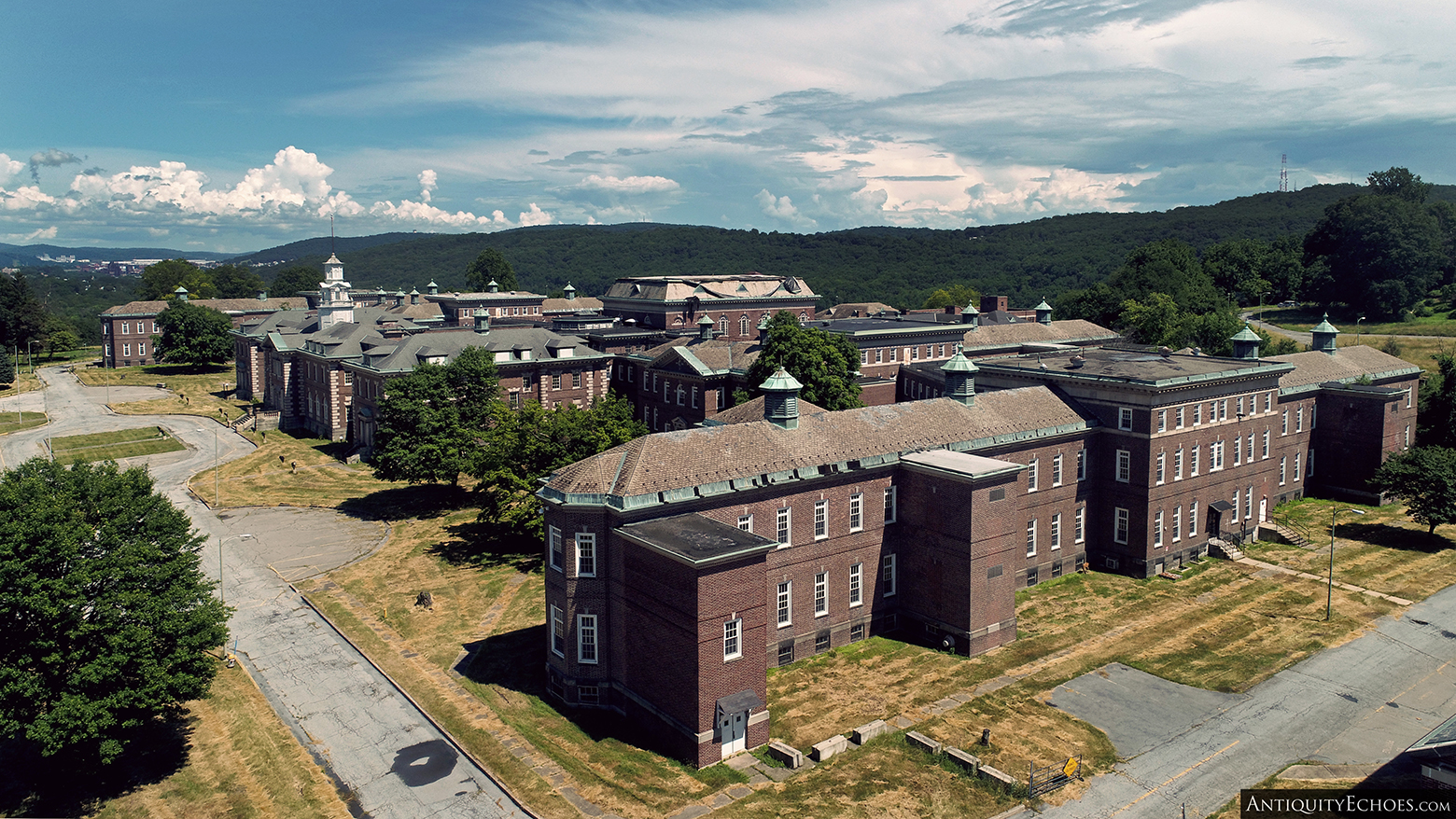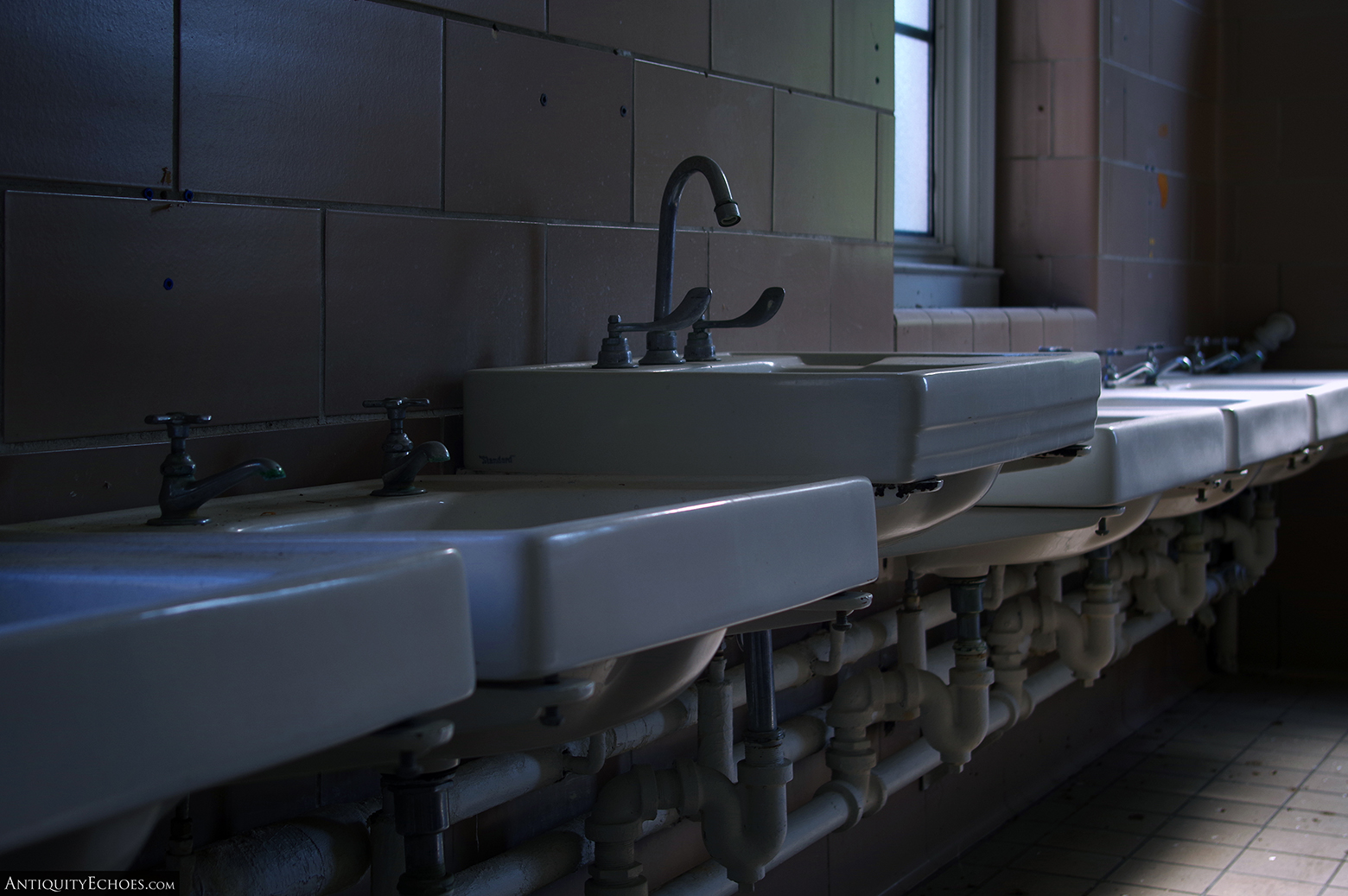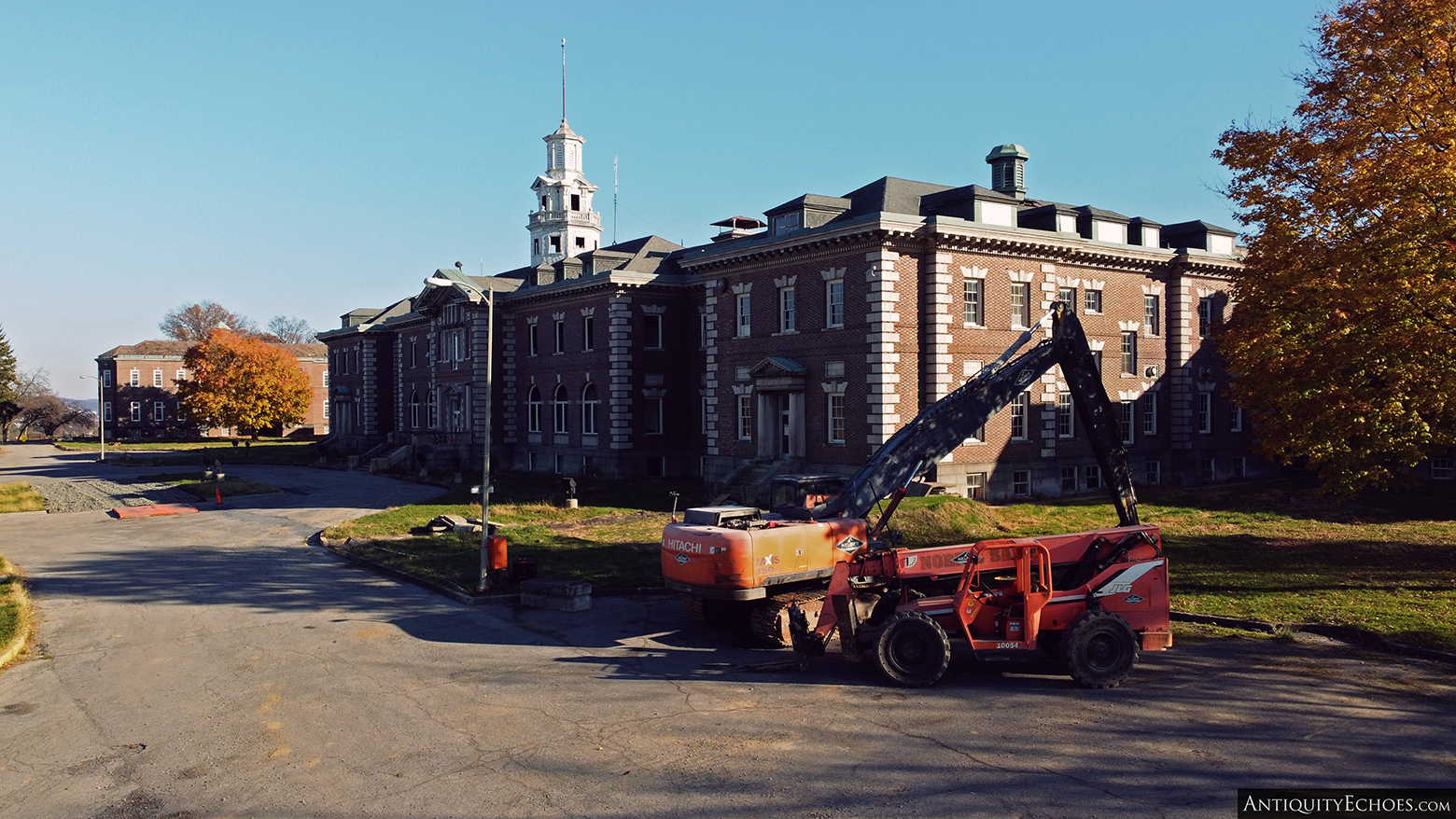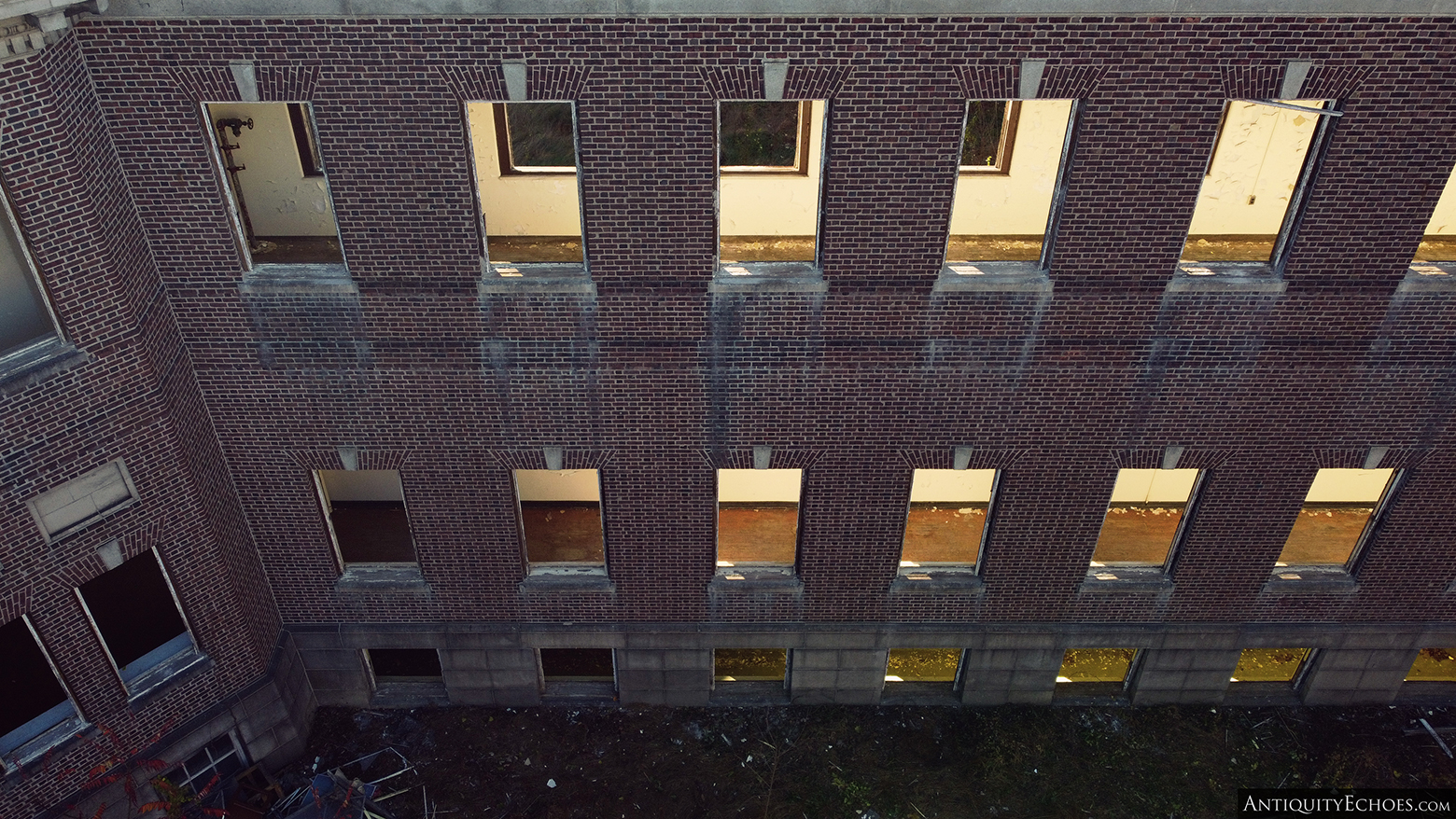Allentown State Hospital
Halls upon halls unfold themselves across overgrown lawns. Bridges which connect the shuttered wards and chambers of the hospital, a web of shadow and dust intricately spun over a century ago. The property is threaded by beautiful breezeways, their abundant windows casting a bright contrast to the murk which drapes the end of their halls. A stagnation that sits beyond the touch of window light. It all stands before you immense, grand, and now empty. When the Allentown State Hospital opened in 1912 it was admired, seen as a noble establishment, and it grew across the crest of this hill for the betterment of the people it served. At one time a city hummed within these bricks, cresting with a population of over 2,000. That was long ago though, and the hospital has sat out of service for a decade. Every patient that once called these rooms home has long gone, as well as the staff who cared for them. They've moved on, moved away. The hospital can't move on though, it can't simply go where it's needed. The hospital must stay behind, left to wither upon its hill alone. A stonework memento to a time when it had ambition. A memorial to itself.
Looking upward at the spired peak, cracked and peeling apart from years of neglect, you cannot help but envision what it all must have been like when the place was alive. When there was light here, not just in the lamps but in the people who walked the corridors. The longer you look, the more clearly you come to see the hospital. Like a face, once hazy, slowly coming into focus. It's beautiful still, even in decline - The features around the doorways, the careful placement of the windows, how they look out like many glass eyes over the city below. The carvings which punctuate corners and columns, the flow of the whole of the facility seems to have an air of reflection to it. A driving purpose to its architecture which is coldly absent in most modern structures. A hospital that is both massive in scope, but also intimate. Somehow familiar, though this is the first time you've laid eyes upon it. Eventually, you realize you've been staring at the building for quite some time, and as you lower your gaze you notice that the hospital has been staring back.
Within the walls a pillared lobby stretches itself into the dark, caked in dust. A modern ruin that simultaneously showcases the best and worst of everything we are. How much we cared, and easily we threw it away. Do artists even still exist who could approach crafting such surroundings? And if they did, would we even bother to have them? “The expense is too much” the bureaucrat would say, before getting into their car and heading home to their fenced suburban home. “Think of the taxpayers”, exclaims the councilmen on a conference call, driving past a street-corner lined with homeless.
Standing in the half-light of the lobby you question “Do we care anymore?” The hospital answers. It speaks to you through florid plaster, gilded banisters, and the woodwork of its chapels. Its voice carries down the long marble halls and reflects off the stained glass skylights. “We did” it says. The hospital isn't simply a vestige of a bygone mindset, and the importance of a building is not confined to any point in time. This hospital may have once been regarded as a modern healthcare facility, today though, it serves a greater purpose – A reminder that we, as a society, have the capacity to do better - That “we did” is no different than “we can.”
Through the years of disuse, the city of Allentown, Pennsylvania, performed moderate upkeep on the property, mowing lawns, and keeping the grounds secure. There was even a faint hum of power within the walls, made evident in evenings when dim lights could be seen illuminating choice windows on an otherwise darkened property. However, this effort was not preservation, rather hospice care for an institution that would never recover.
Buildings have stories, they all do. Some personal, some surprisingly profound. Given enough time one may uncover many teachings within the stonework of their anatomy. The Allentown State Hospital surely held countless, but we will never hear them. After a decade of limbo the end came quickly for the former hospital. In the late autumn of 2020 demolition equipment began the slow work of removing the campus from existence. When we visited the grounds in early November of 2020 we found a shell where once a dignified and respected hospital stood. Not a shell in just a literal sense, though it was, but in a more nebulous way which is difficult to articulate. The spirit of the place was gone, where there had been warmness, a tangible presence of history, there remained nothing more than an empty building. Toward the rear of the campus numerous ward wings exist in partial erasure, wretched open, their contents spilled upon the earth.
Out front the admin looked down from atop its knoll, but with most of its windows removed the facade had taken the appearance of a skull with its eyes plucked out. Perhaps most upsetting was to see the spire which stood atop it - Once a symbol of pride for the city, now gutted and prepped for demolition. A spire which once represented care, empathy, and life. Now a harbinger of death.






The vista grew increasingly disheartening the longer we looked. Within the lobby, most all of the ornamental details remained - Marble tiled walls and floors, gilded ironwork railings, stonework columns with carved capitals. None rescued. All going down with the building, destined to be lost in some tragically misguided rush to clear the property for sale. The theft of history from the citizens of Allentown, orchestrated behind some closed doors at the statehouse. The sun had set, the last of its blonde rays flickering across the spire before all was covered in murky shadow. This was to be the last sunset that the hospital would ever witness, but at least it was a beautiful one. Before long the streetlamps hummed on, their pale yellow glow illuminating the front lawn and drive, but sadly absent were the lamps which once lighted the hospital itself. It stood there, a hulking mass of black just barely evident in the shadows beyond the lamplight. We left, to return just some hours later when the demolition crew arrived.

Not long after the spire fell the snowstorm gave way to sudden and dramatic sunshine over the rear of the building, casting brilliant beams of light through the haze of water mist that was now being pumped into the air by several turbine fans as a form of dust control. It would not be an exaggeration to say the scene was utterly heavenly, with almost unearthly golden beams of light cast some hundred or so feet in length, entering in through the gaping roof of the admin, where the spire stood just moments ago, and exiting through the missing windows on the face of the building. The centerpiece of this breathtaking scene was a three-story corpse, the absurd beauty of it all serving as the perfect conclusion to a series of events that should never have transpired. Within a few hours the last of the hospital was razed, and crews began work on grading the land and filling the tunnels. Thus ends the last night and final morning of the Allentown State Hospital –

>































































































